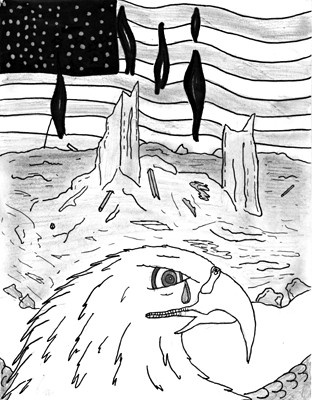All Nonfiction
- Bullying
- Books
- Academic
- Author Interviews
- Celebrity interviews
- College Articles
- College Essays
- Educator of the Year
- Heroes
- Interviews
- Memoir
- Personal Experience
- Sports
- Travel & Culture
All Opinions
- Bullying
- Current Events / Politics
- Discrimination
- Drugs / Alcohol / Smoking
- Entertainment / Celebrities
- Environment
- Love / Relationships
- Movies / Music / TV
- Pop Culture / Trends
- School / College
- Social Issues / Civics
- Spirituality / Religion
- Sports / Hobbies
All Hot Topics
- Bullying
- Community Service
- Environment
- Health
- Letters to the Editor
- Pride & Prejudice
- What Matters
- Back
Summer Guide
- Program Links
- Program Reviews
- Back
College Guide
- College Links
- College Reviews
- College Essays
- College Articles
- Back
The Drift to War
While Isolationism had once spanned America’s political spectrum, convincing the U.S. population to remain neutral in ww2, approaching circumstances would provide provocative reason for entering the war. Due to economic hardships, German resentment, and Authoritarian nationalism, racist jingoism in Italy and Germany, led consecutively by Benito Mussolini and Adolf Hitler, Europe had foreboding foreign tensions that would quickly process into multinational conquering and militaristic foreboding. Though the U.S. majorly supported neutrality, several politicians sensed the quickly arising foreign tensions, to which FDR quietly began preparing the Navy and American armed forces for war. When Hitler invaded Poland September 1, 1939, the shadows of warfare had just become darker, signaling the beginning of another Great War. Americans continued to stick to the general scheme of Isolationism, yet were steadily coming to the sense that the U.S. would need a stronger defense to defeat of Germany in order to preserve its democracy. After winning the election in 1940, FDR began to really focus on aiding his fellow Allie powers against the Axis powers, with a series of acts, including the Lend-Lease Act (1941), which allowed Roosevelt to sell or exchange arms with several nations. Furthermore, FDR “extended the U.S. security zone nearly halfway across the Atlantic Ocean and ordered the Coast Guard to seize any
German-controlled or German ships that entered an American port”- Out of Many, third edition; directly ordering any Nazi vessel in U.S. waters to be shot on sight. Meanwhile while the war in Asia continued to proceed, unbeknownst to the U.S. who had thought that Japan had been planning an attack on the Philippians, had actually targeted the U.S. in order to knock America out of the Pacific in “a single blow.” On a date that will in “live in infamy,” On December 7, 1941, Japan bombed Pearl Harbor, a U.S. military base in Hawaii, and within two hours destroyed 200 American planes and 2,400 Americans were killed, with additional injuries. Finally recognizing the severity of war in Europe, on December 11, the U.S. officially entered WW2.

Similar Articles
JOIN THE DISCUSSION
This article has 0 comments.